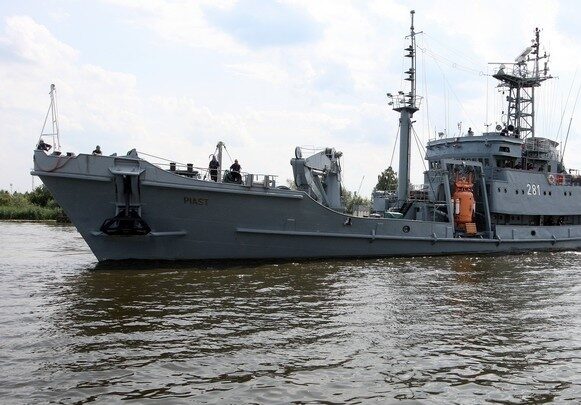ORP Piast






ORP Piast (281) is one of two Project 570M rescue ships operated by the Polish Navy. It was designed and built at the Northern Shipyard (Stocznia Północna) in Gdańsk and entered service on January 26, 1974. Throughout its service, the vessel participated in hundreds of operations and exercises, both domestically and internationally. At the turn of 1990 and 1991, alongside ORP Wodnik, it was part of the Polish naval contingent deployed to the waters of the Persian Gulf. Notably, the ship was also involved in the recovery of the wreck of fishing boat CHY-8 and the retrieval of 18th-century cannons for the Central Maritime Museum.
In 2015, ORP Piast was withdrawn from active service and transferred to the Naval Shipyard (Stocznia Marynarki Wojennej), which at the time was undergoing bankruptcy proceedings. Initially, only medium and dry-dock repairs were planned. Unfortunately, that contract was never fulfilled.
In late October 2016, a new tender was announced. At the same time, it was reported that the ship’s technical condition “did not allow it to perform the tasks intended for this vessel on behalf of the Polish Navy.”
In 2017, the contract for repairs was awarded to a consortium consisting of Remontowa Nauta Shipyard and the Naval Shipyard. The agreement was signed for approximately PLN 63 million, with a completion deadline set for July 2018. A later annex expanded the scope of the work, increasing the contract’s value to around PLN 66 million and extending the completion date to March 2019.
As part of the refurbishment, shipyard workers carried out extensive repairs, including:
– hull restoration,
– shaft line servicing,
– steering system overhaul,
– repair of onboard tanks,
– modernization of navigation equipment and communication systems,
– ongoing maintenance of the main 6TD48 engines,
– replacement of power generator sets,
– repairs of crew areas,
– servicing of the decompression chamber, diving bell, and auxiliary equipment.
Piast-class vessels are designed to perform rescue operations and underwater work at depths of up to 120 meters, including providing assistance to disabled submarines. They can operate independently or in cooperation with surface vessels and aircraft, offering support such as leak control, water system repairs, towing, refloating stranded vessels, firefighting, and medical assistance. Thanks to their deck cranes, they are capable of retrieving objects weighing up to 10 tons from the seabed.
During rescue operations, these ships are equipped with advanced systems, including:
– a Dynamic Positioning System (DPS),
– the Homar underwater object search system,
– a diving bell,
– a decompression chamber, and
– a remotely operated underwater vehicle (ROV).
They are also adapted for patrol and ship inspection duties as part of maritime blockades, enforcement of international embargoes, and in support of the maritime economy.